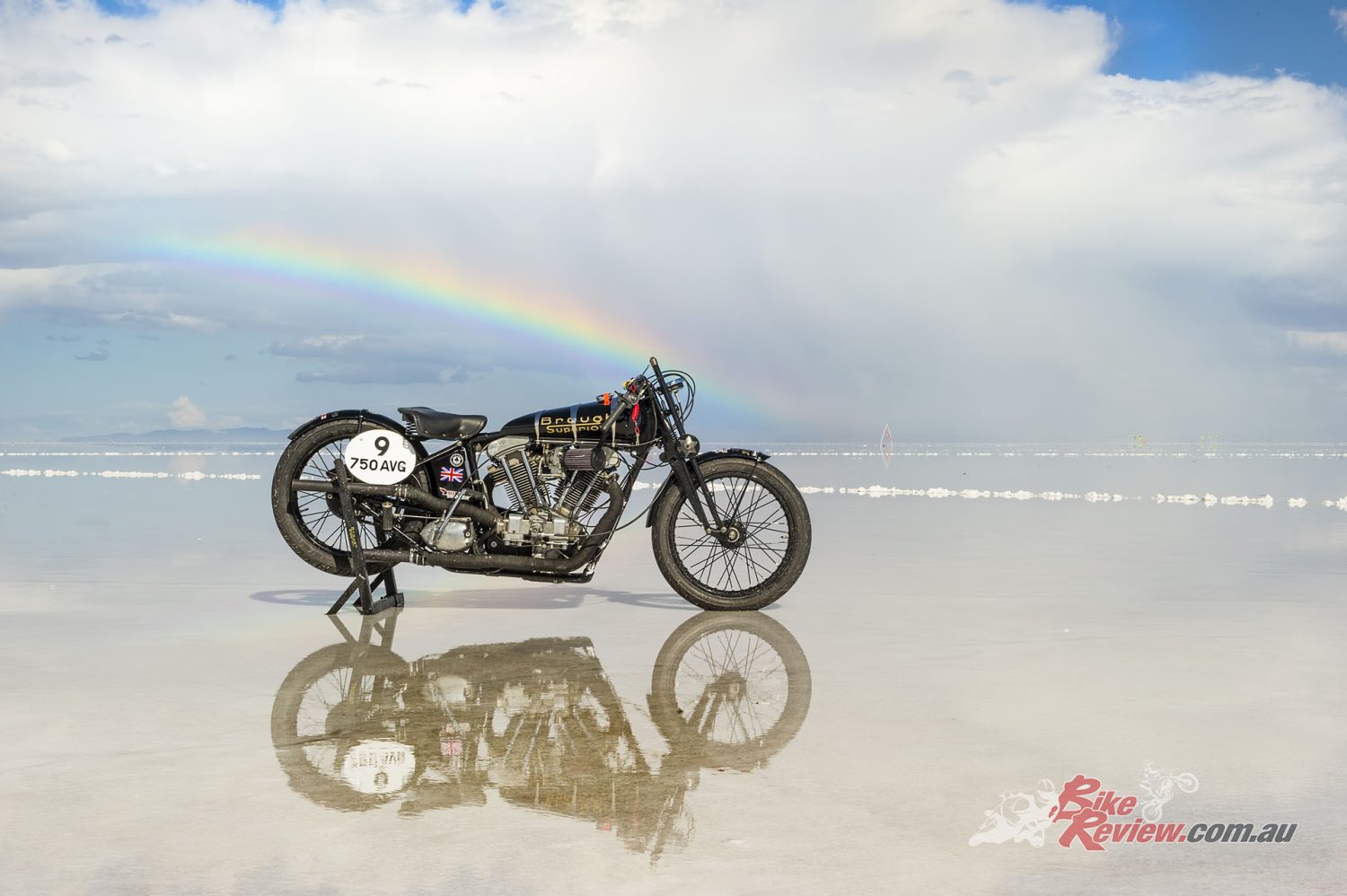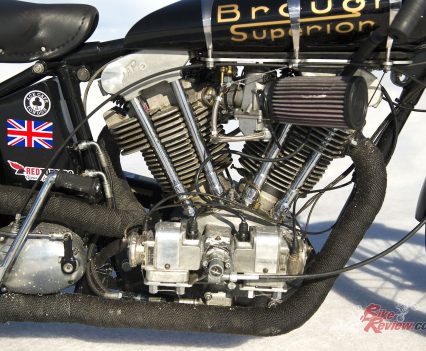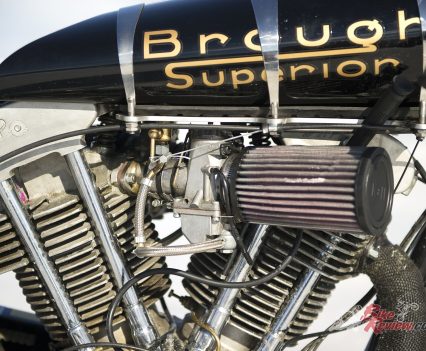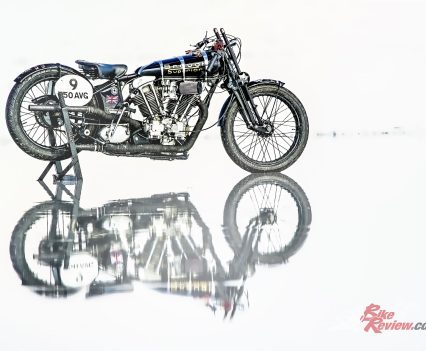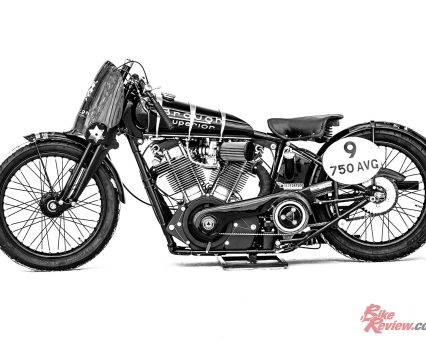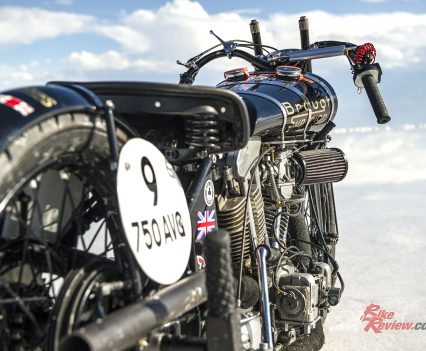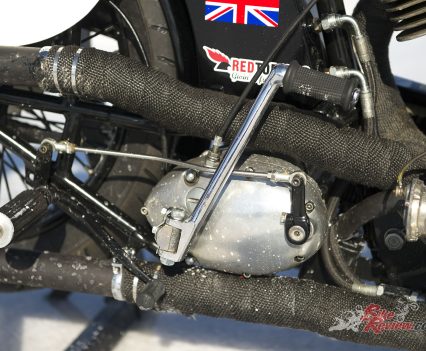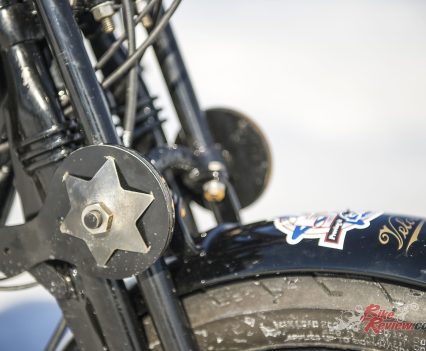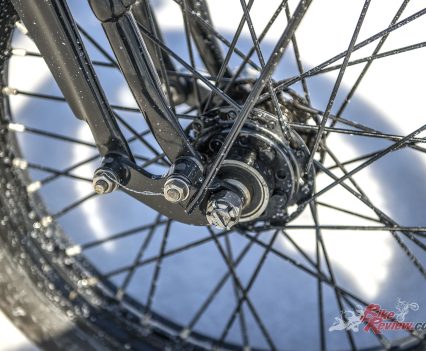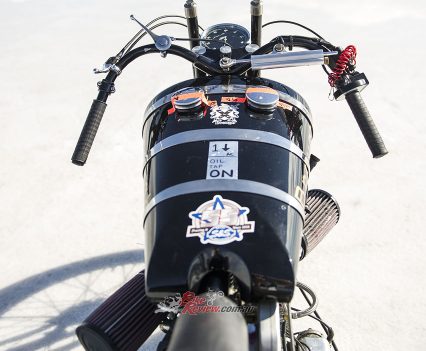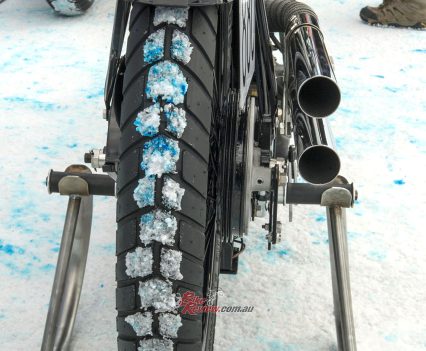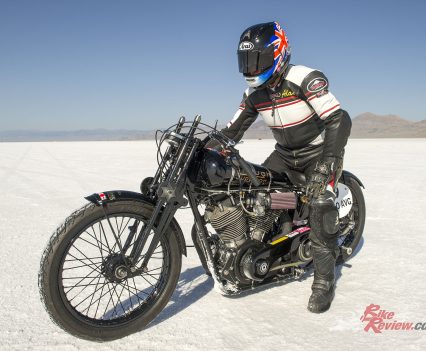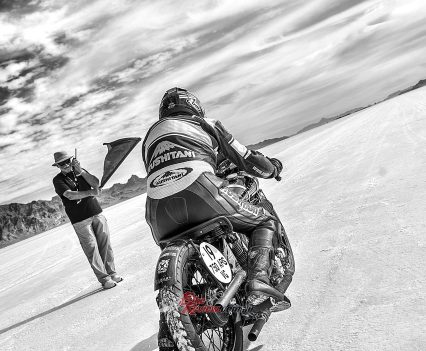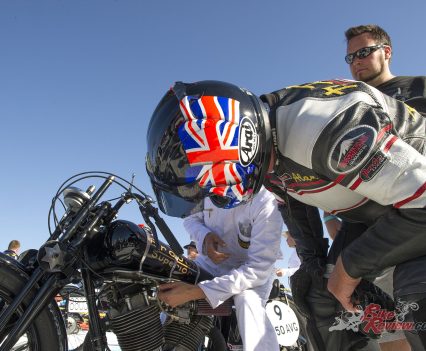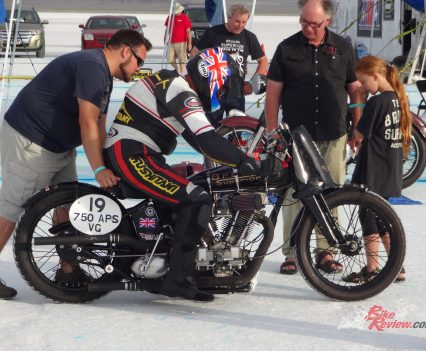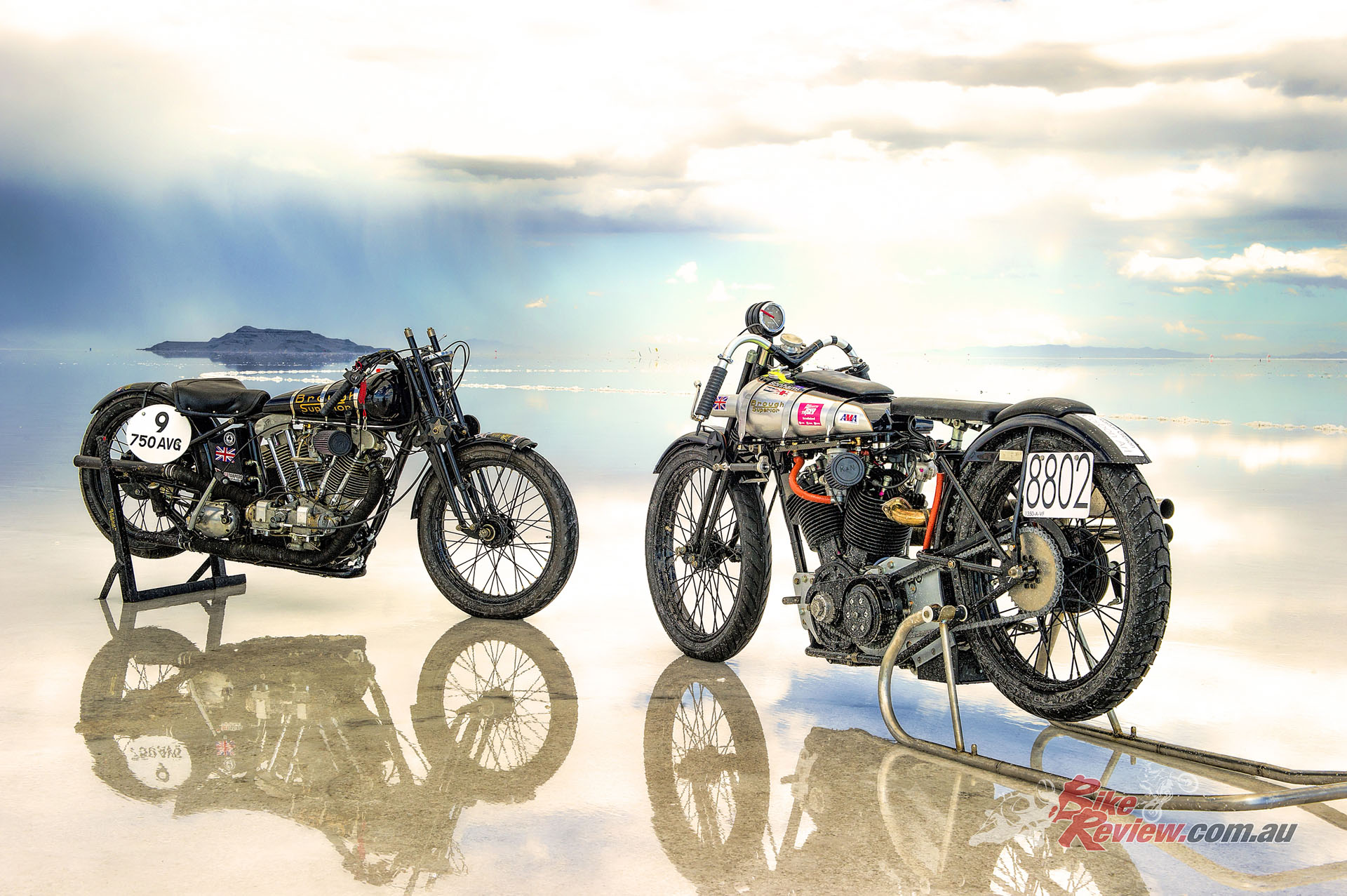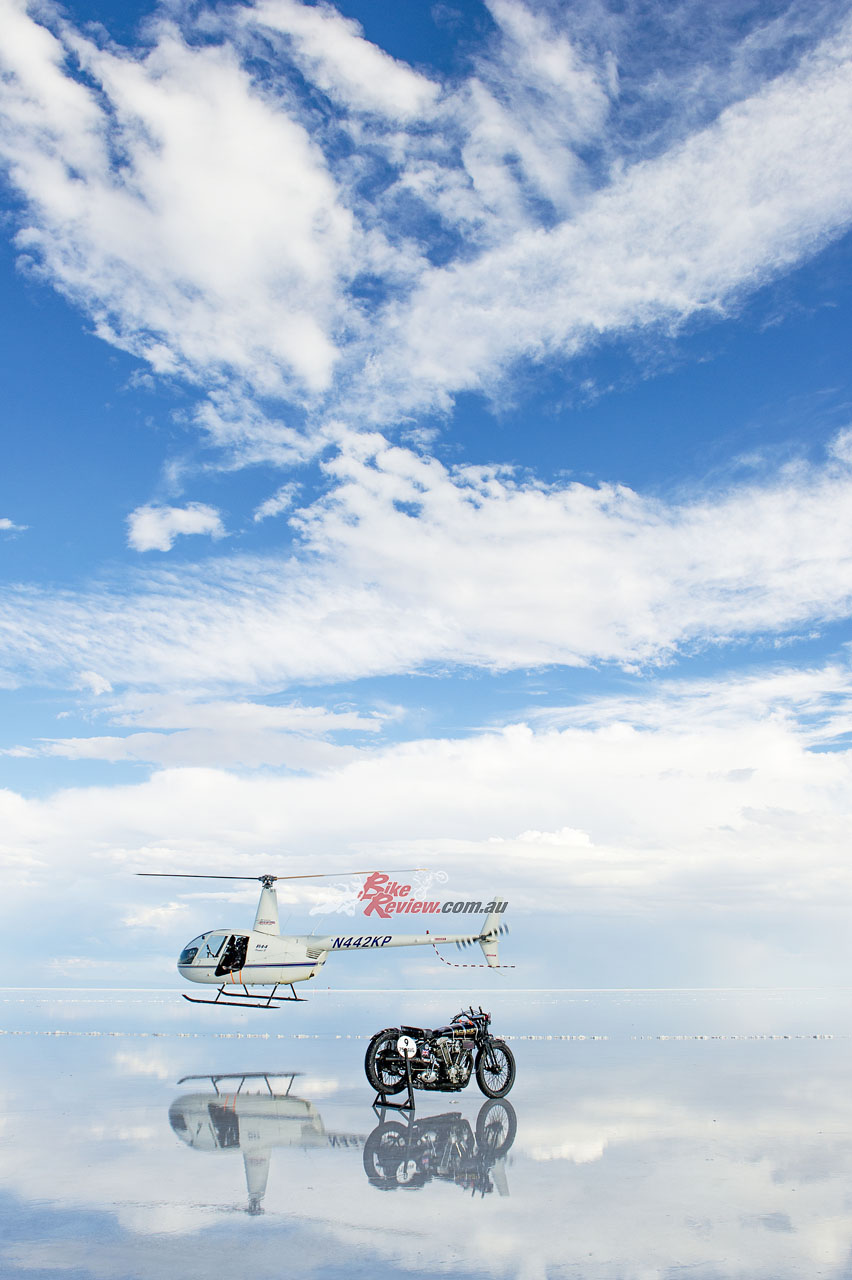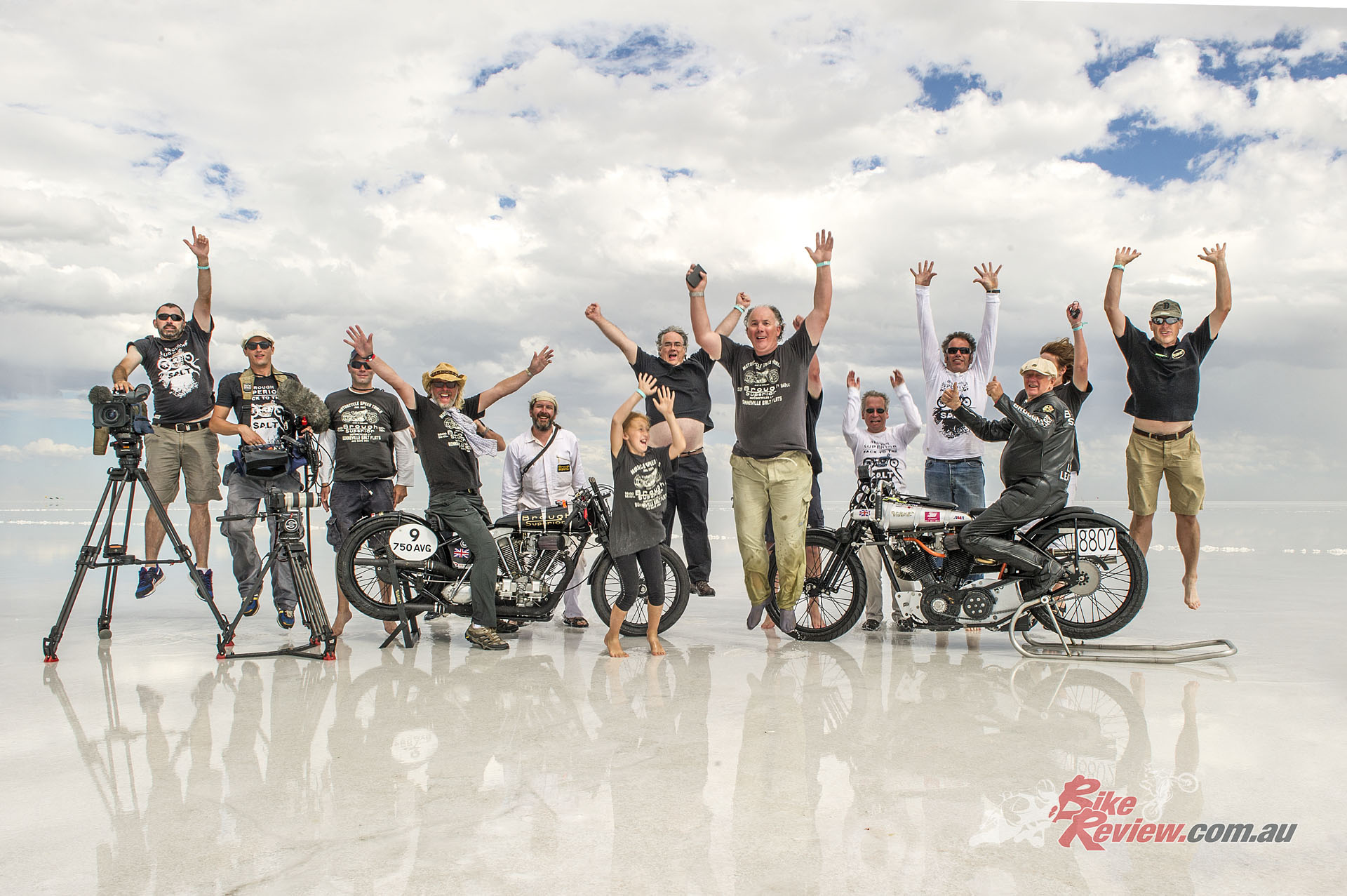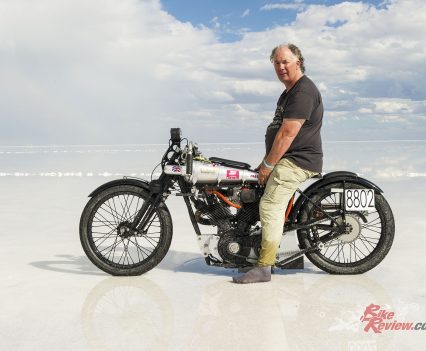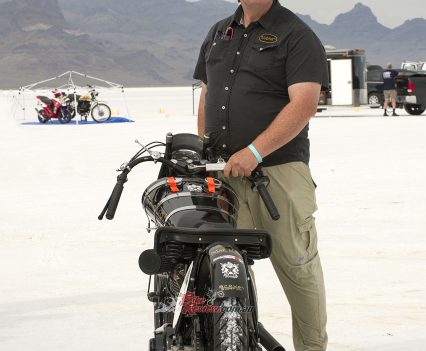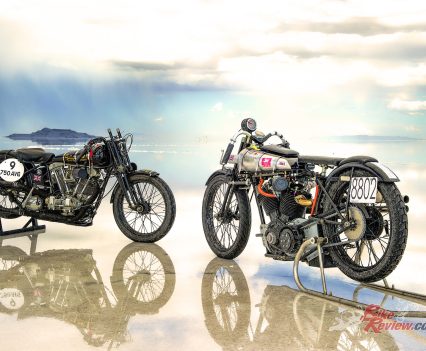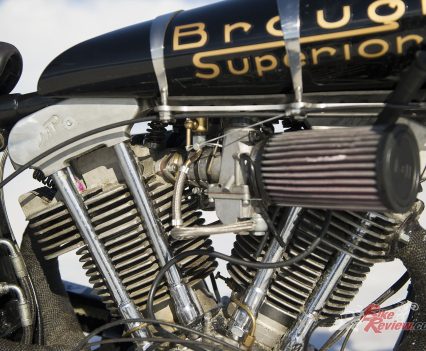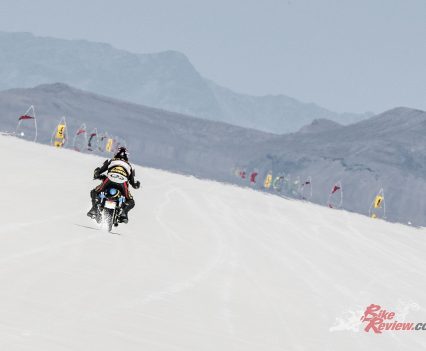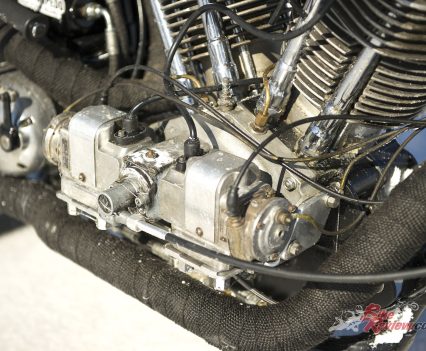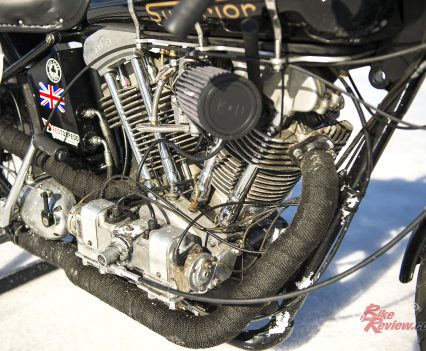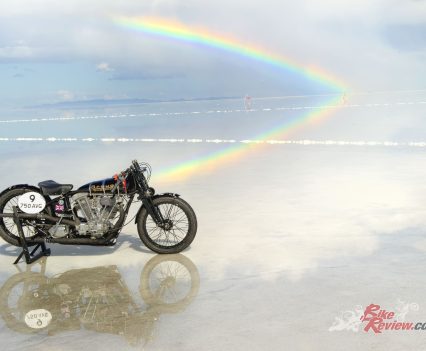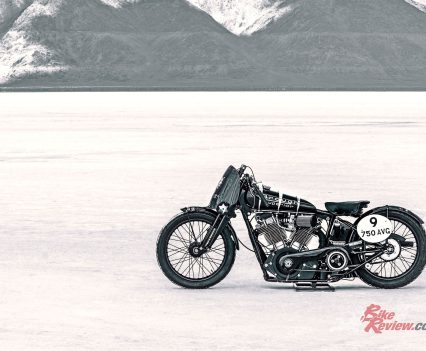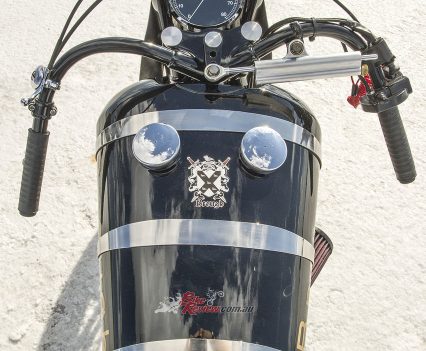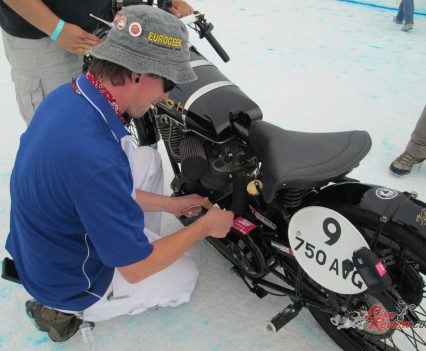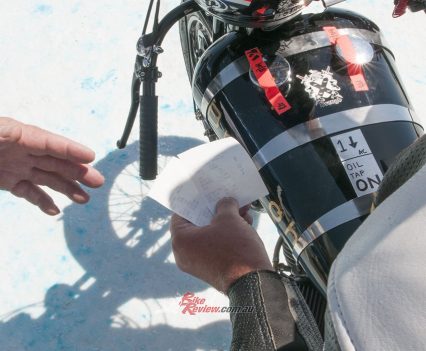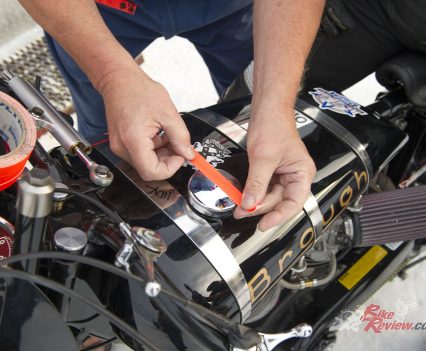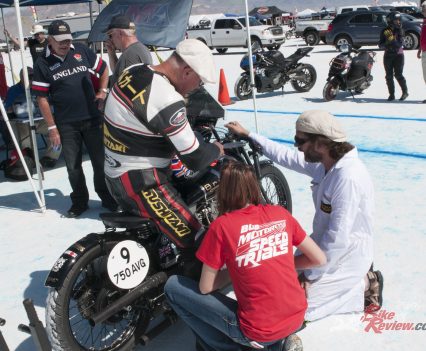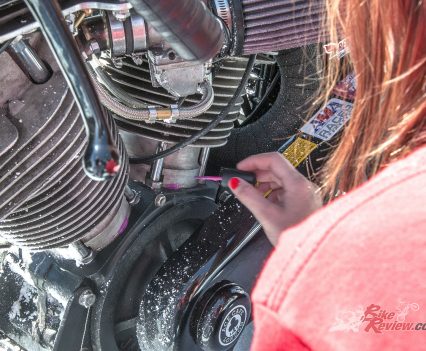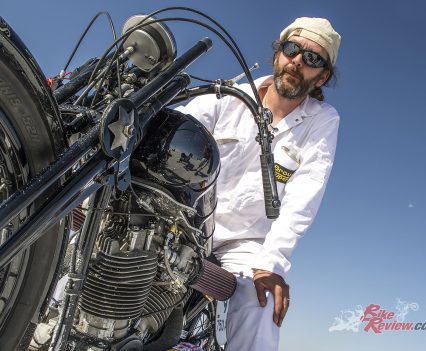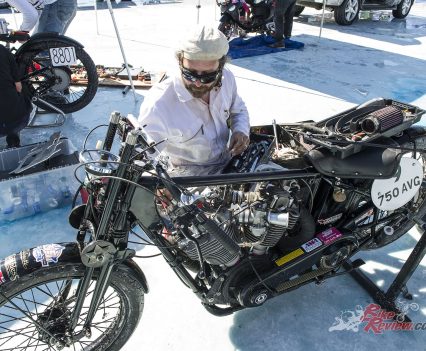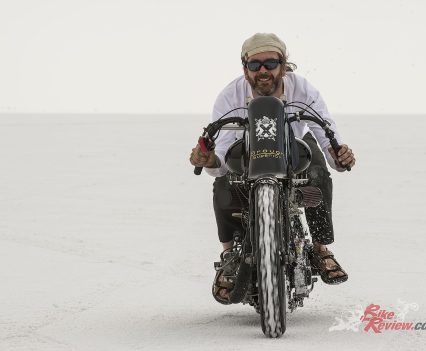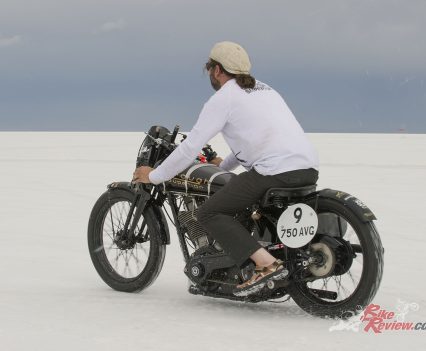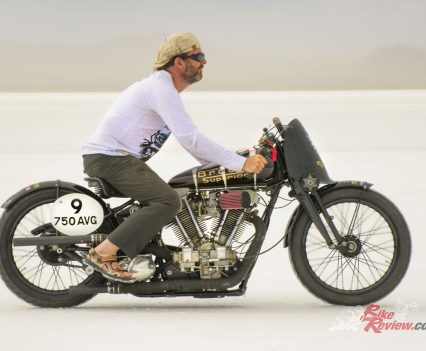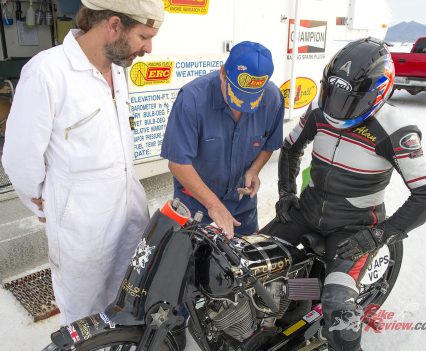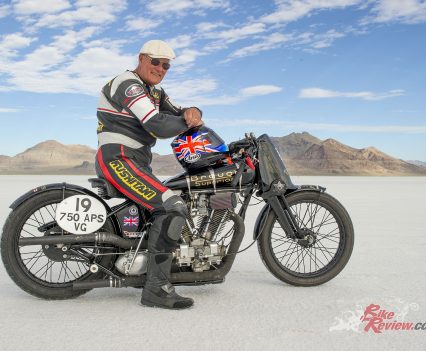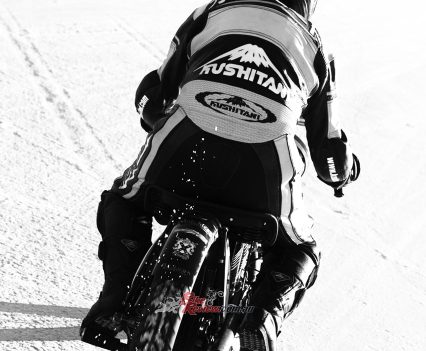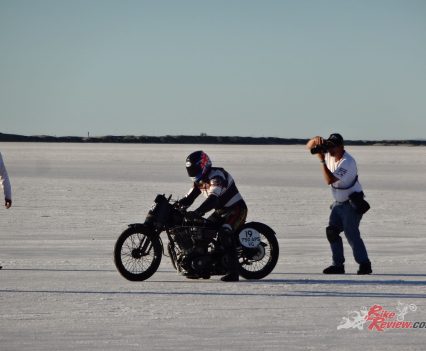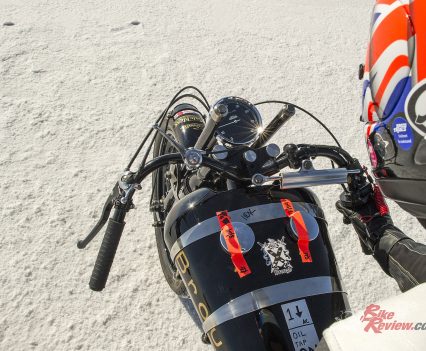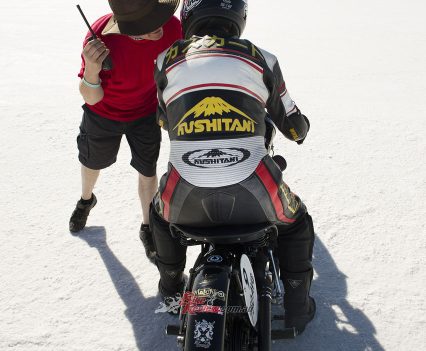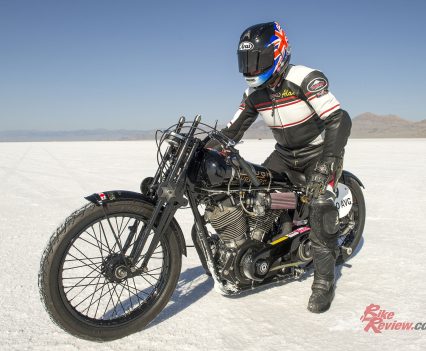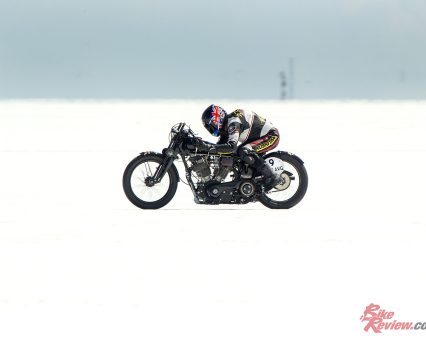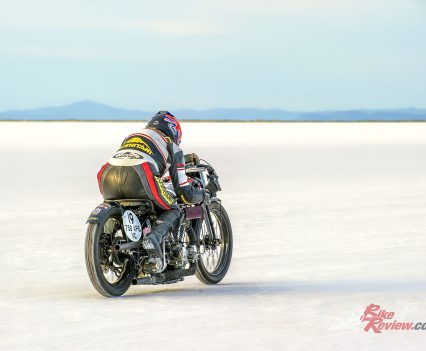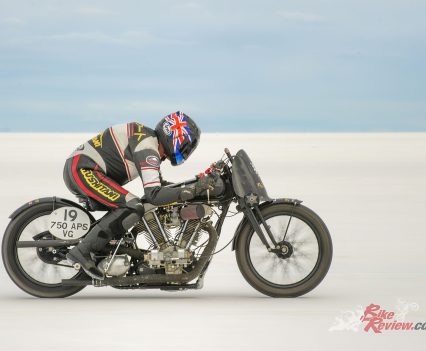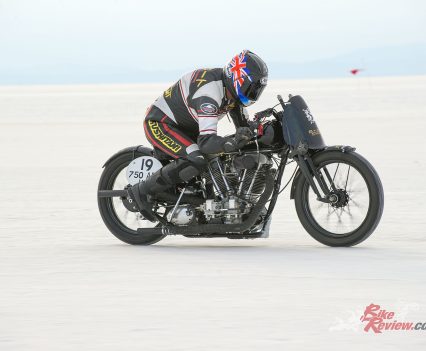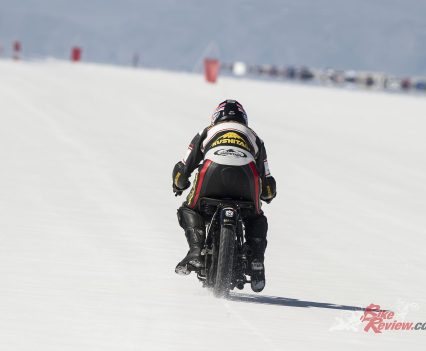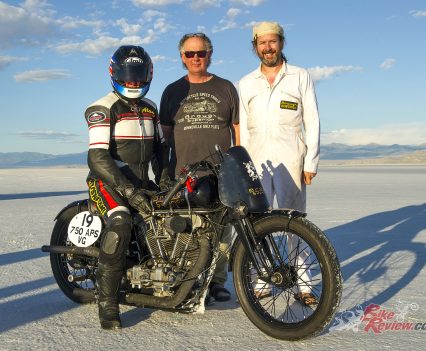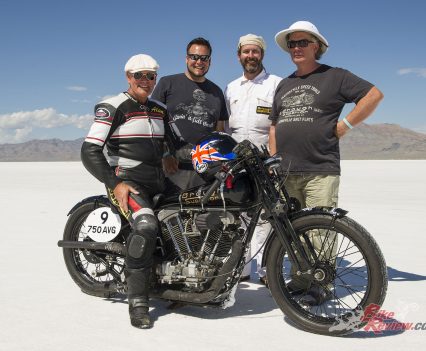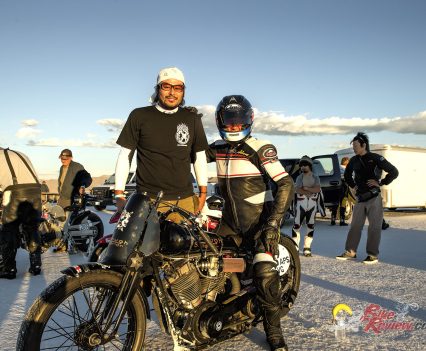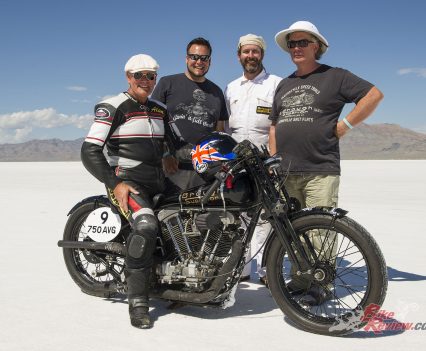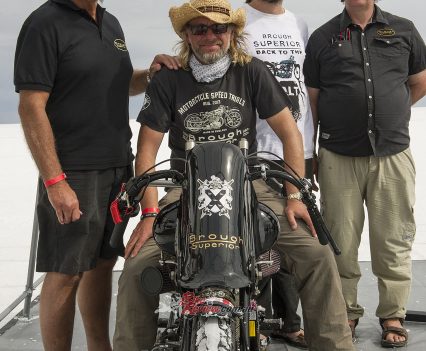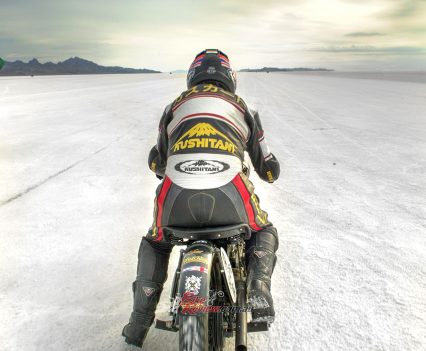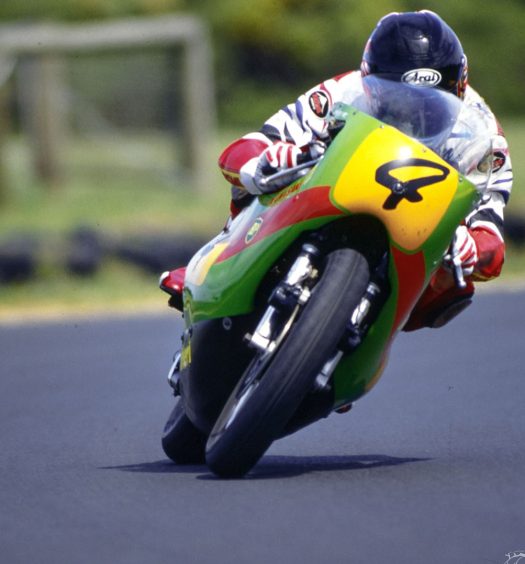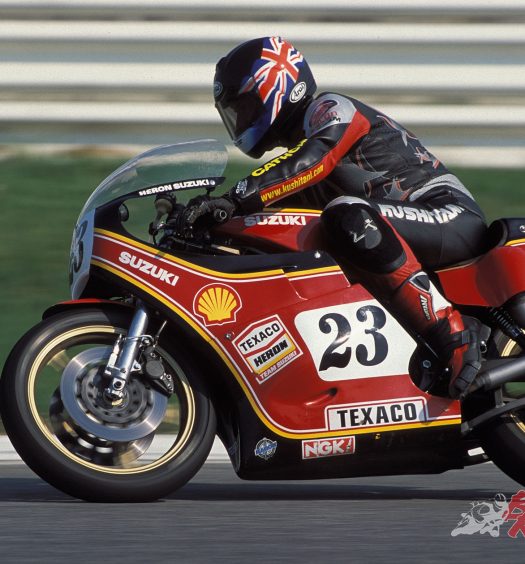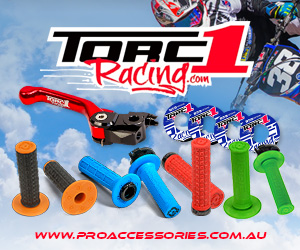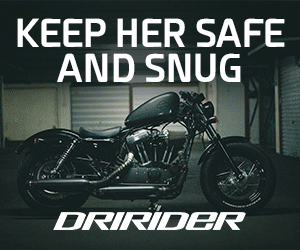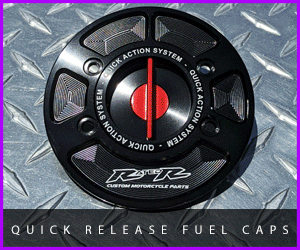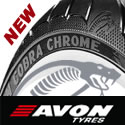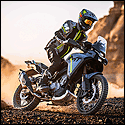10 years ago Cathcart took a Brough Superior to the Bonneville Salt Flats to set a new World Record. Check out all the work that went into building the Baby Pendine 750... Photos: Phil Hawkins
Brough Superior are known for their pre-WW2 record breaking bikes. Back in 2013, I took a very special Brough Superior to the Bonneville Salt Flats in search of a record. Securing a space in the record books on board the Baby Pendine 750…
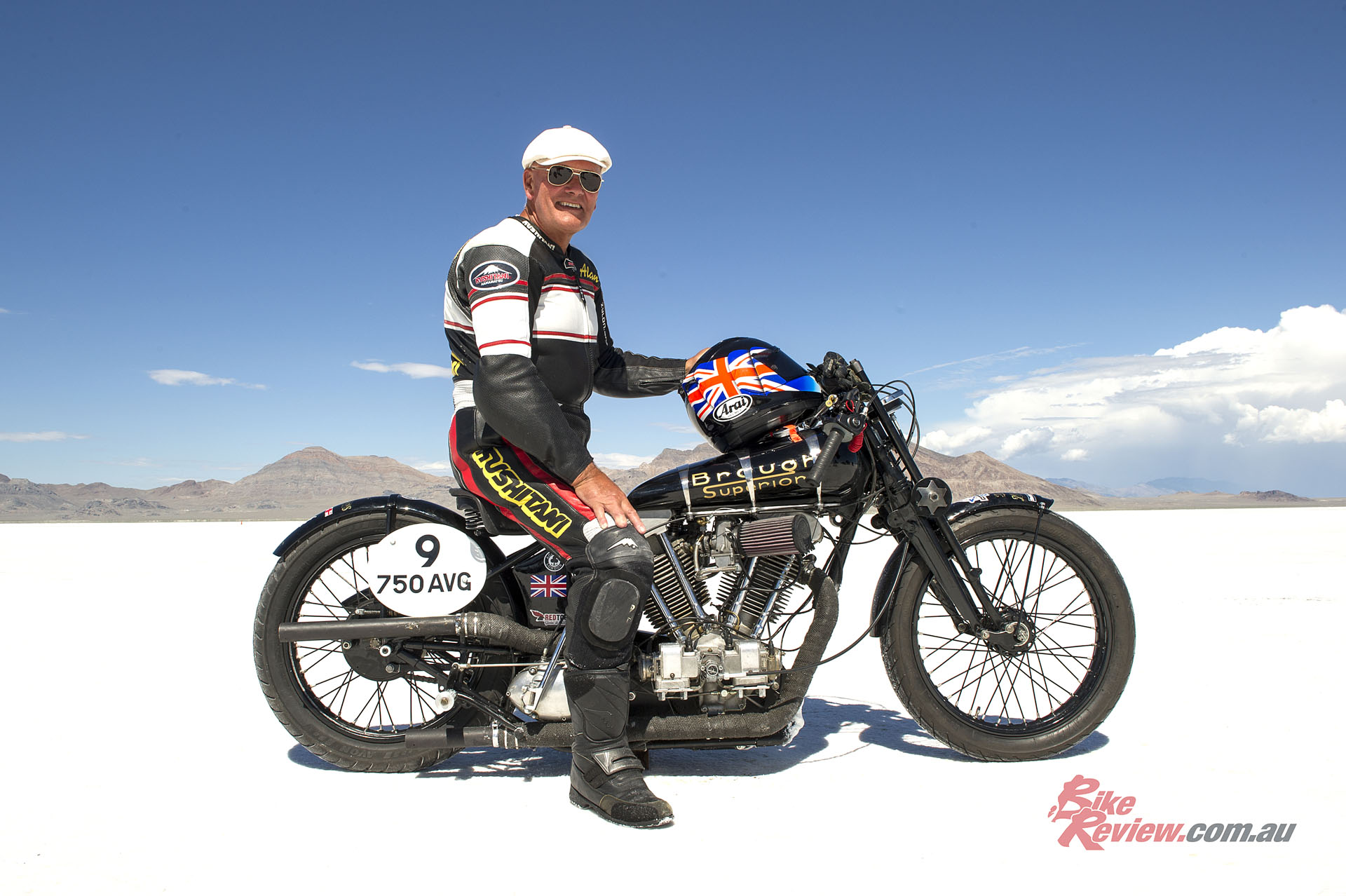
AC headed out to the Bonneville Salt Flats in search of a world record on-board the Brough Superior 750 Baby Pendine!
Check out the full story of the Baby Pendine here…
Measuring 74 x 85mm for a capacity of 748cc, the air-cooled OHV 50º V-twin JAP engine in the world record-holding Baby Pendine was always designed as a full race motor, delivered new in 1954 with the same twin BTH Racing TT magnetos now providing the sparks and running 36º of advance.
On receiving the motor, Sam Lovegrove firstly fitted a pair of later 32mm Amal Mark 2 Concentric carburettors as permitted by AMA Vintage class rules. “But it didn’t seem to produce very good power when I put it into a Norton Dominator road chassis just as a test bed,” he said. “So I started changing a few things, mainly cylinder head porting, the exhaust design, intake shape, the carburettors, and of course cam timing – and it’s ended up producing a true 44bhp at the rear wheel at 5,450rpm, running on 9.75:1 compression.”
For sure, extracting that level of performance from a venerable vintage V-twin – by comparison, the iconic green-frame Ducati 750SS desmodue that was a close cousin of Paul Smart’s Imola 200-winner produced 64bhp in 1974 – was not the work of a moment.
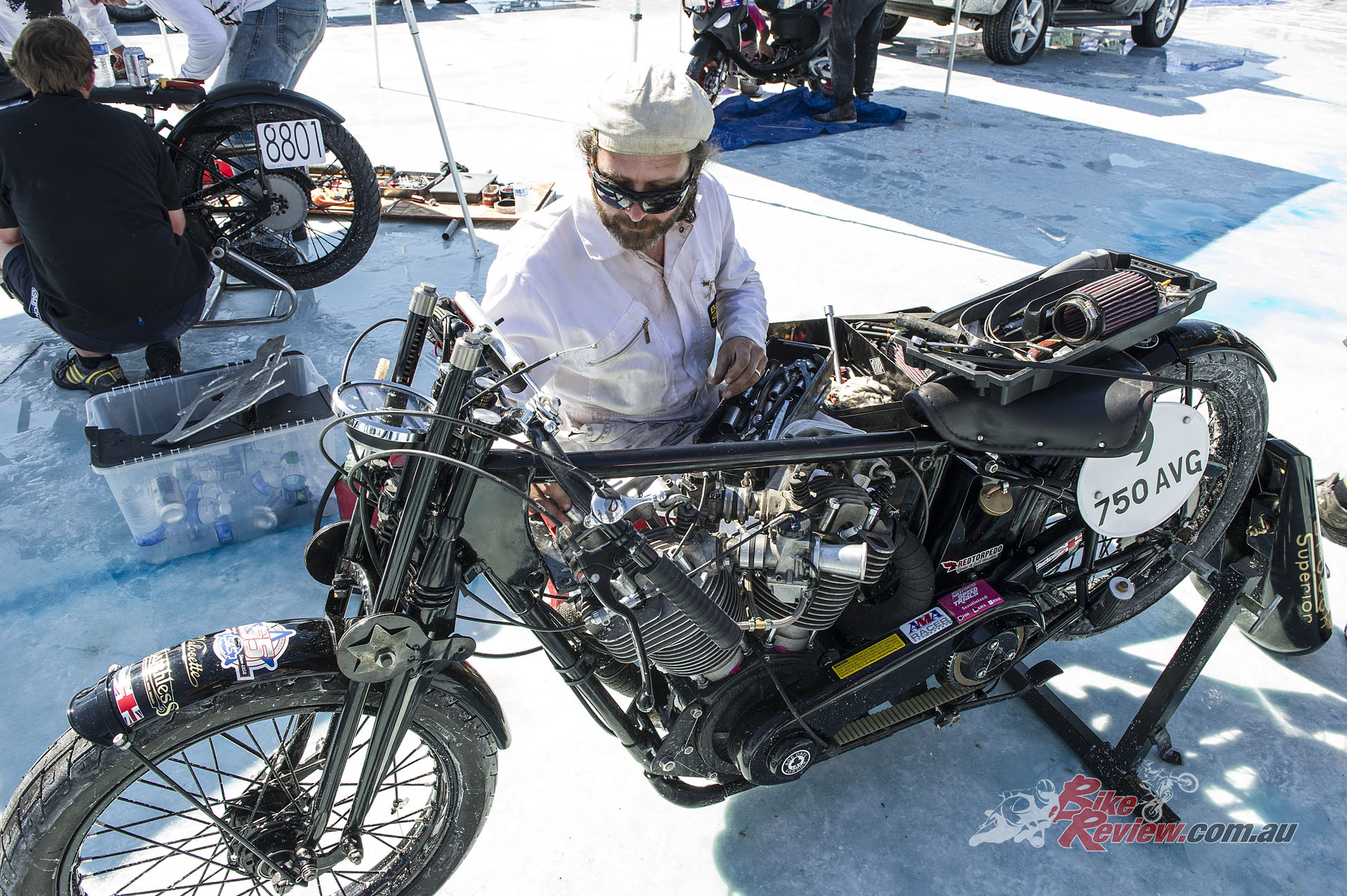
Lovegrove-tuned 750cc V-twin JAP engine, one of a small batch produced in 1954 of around 30 special race motors.
The eight-stud engine, whose aluminium cylinders carrying cast iron liners were mounted on the original JAP magnesium crankcases, had a knife-and-fork crankshaft layout (same as a Harley) with a single row ball-race main bearing on the timing side, and double row on the drive side. It had a highly polished billet steel flywheel which Sam believed was a period modification, same as the non-stock conrods with phosphor bronze plain little end bearings, and four-row roller-bearing big ends. The slightly domed pistons with pronounced valve cutaways found in the engine were retained, though these were also not original, and appeared to be Italian made.
“They were in the engine when I got it, but I don’t actually know what they are,“ said Sam. “I couldn’t find any numbers on them – but they’re almost new with a correct amount of clearance, so they don’t clatter. Someone’s already done some good machining work on their crowns for that. I only had to open up the radiuses a little for the larger valves.”
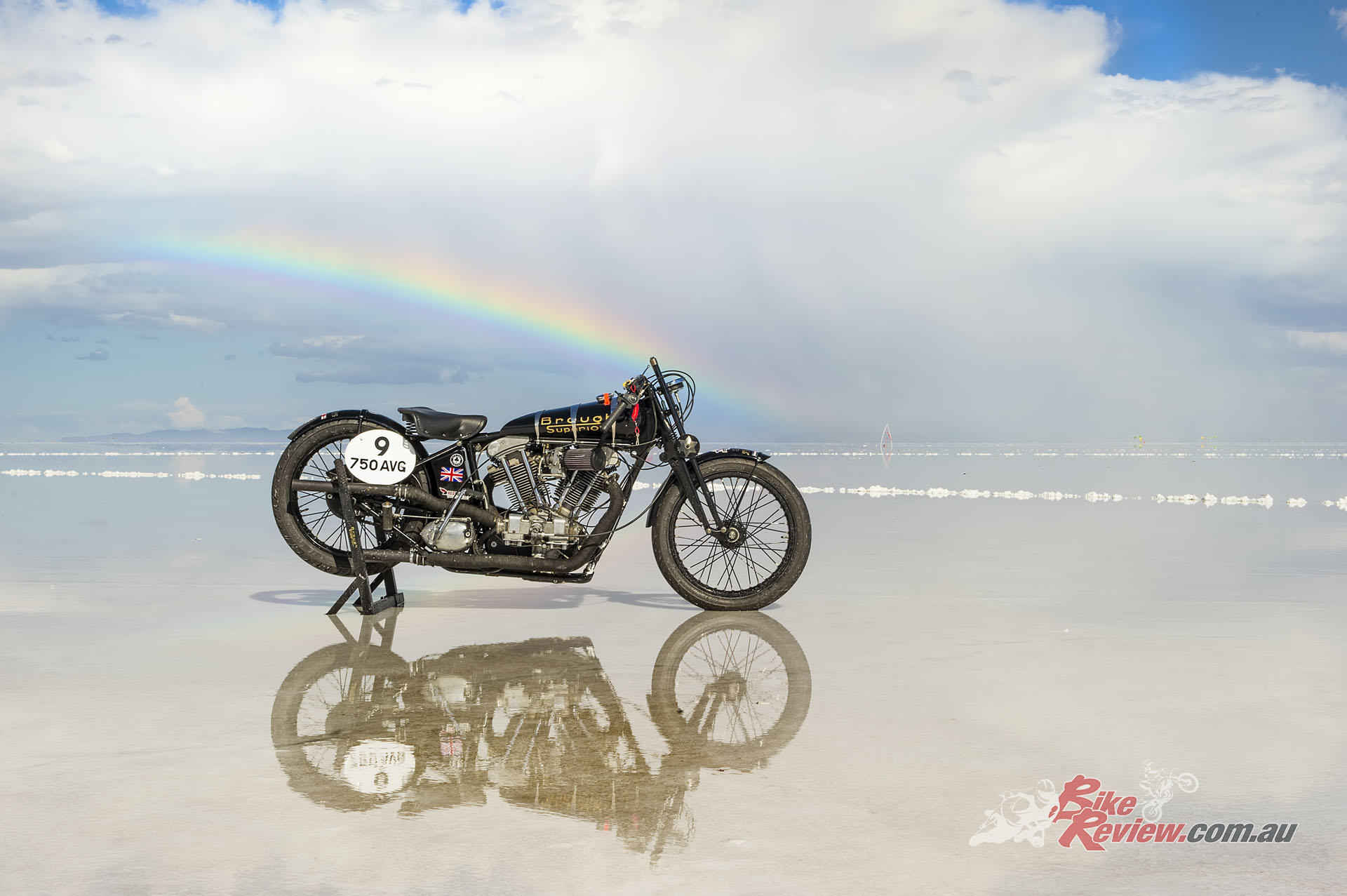
Measuring 74 x 85mm for a capacity of 748cc, the air-cooled OHV 50º V-twin JAP engine in the record-holding Baby Pendine was always designed as a full race motor, delivered new in 1954 with the same twin BTH Racing TT magnetos.
Indeed, the aluminium cylinder heads with hemispherical combustion chambers now carried larger 36mm inlet and 33mm exhaust valves, each with twin exposed springs, and were operated by the cams which came with the engine, duly modified by Lovegrove who remade the roller followers with harder phosphor bronze rollers, then ground them internally to get the correct barrel shape. He also constructed a vernier system to adjust the cam timing separately for each cylinder, knowing that truing this up is a key issue in making JAP engines run fast.
Finally, the specially-built five-speed transmission used a Nourish gearbox shell with a kickstart, Triumph Trident main shafts, a T150 inner end cover and T160 outer, and aftermarket performance gear pinions chosen to deliver an optimum set of gear ratios for the Salt Flats. That meant a relatively tall bottom gear to get the show on the road, then second and third quite close together, a bigger gap to fourth, and a much bigger one to fifth, which was a 1:1 ratio rather than an overdrive, all matched to a dry clutch with ceramic plates, and a belt primary drive. The exhaust system was basically a straight through equal length design concocted by Sam himself, with each pipe having an equal number of bends to its mate.
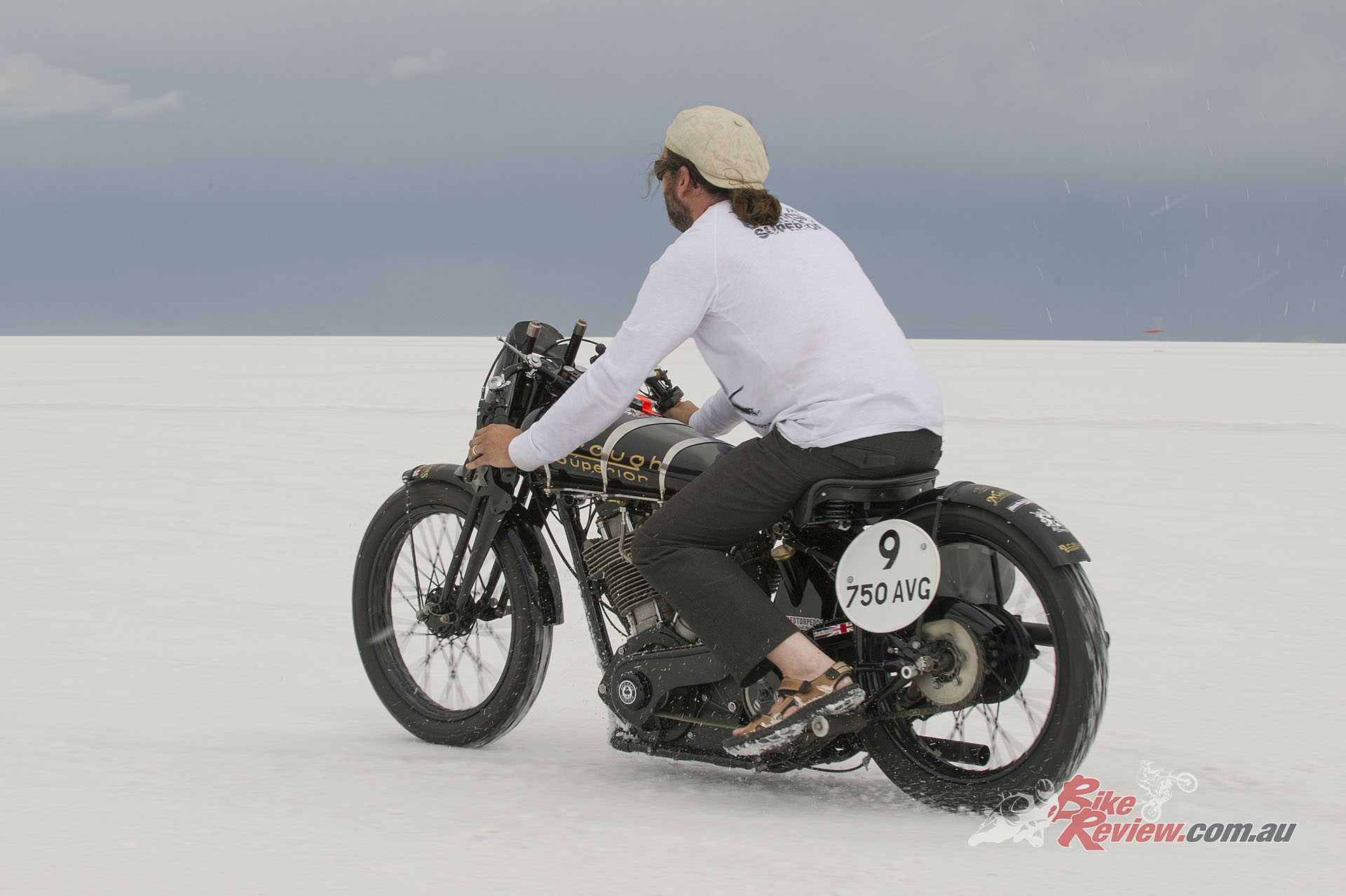
Sam Lovegrove taking the Baby Pendine for a quick lap of the pits before AC takes it for the first shakedown.
This good-looking vintage-era motor was housed in a single loop/double lower cradle rigid frame built up by Lovegrove using original cast chassis members from a 1927 Brough Superior Pendine frame. These comprised the headstock, front lower frame brace, steering tube lug, rear forks, all of the front fork lugs, and indeed everything other than the gearbox mounts, which Sam then welded together with steel tubing, with the engine carried in widely spaced thick-section aluminium plates which helped tie it in very tightly, to minimise vibration.
19in wheels were fitted front and rear, shod with Avon Roadmaster rubber, with only a rear seven-inch SLS brake made from a mixture of Vincent and home-made parts to stop the bike – running at Bonneville is all about go, not slow, so no need for a front brake so as to minimise friction….
Brough Superior’s patented trademark Castle forks were fitted, with the carefully shaped and steeply dropped handlebar made from ⅞in CDS/cold drawn steel, and mounted in a 1927 Pendine top central lug. The complete bike weighed 160kg dry, split almost 50/50 before yours truly added his slightly more than half that amount of body weight to the replica period Lycett seat frame beautifully made in the Czech Republic, then covered in hand stitched leather by Sam Lovegrove’s helpful local shoe repairer in Redruth, Cornwall – many thanks, Star Shoe Repair, you helped make the Baby Pendine into a world record holder!
Brough Superior Baby Pendine 750 Salt Flat Racer Specifications
ENGINE: Air-cooled OHV dry-sump 50º V-twin four-stroke with pushrod operation of two valves per cylinder, 748cc, 74 x 85mm bore x stroke, 2 x 32mm Amal Mk.2 Concentric, 2 x BTH Racing TT magnetos, 2 x BTH Racing TT magnetos.
CHASSIS: Single-loop double lower cradle tubular steel frame, Castle forks (f) N/A (r) No front brakes (f) 178mm single leading shoe drum (R) 3.25 x 19 Avon Roadmaster on 3.25in 40-spoke wire-laced rim (F) 100/90-19 Avon Roadmaster on 3.50in 40-spoke wire-laced rim (r). 1500mm wheelbase.
PERFORMANCE: 44hp@5450rpm (at wheel), 105.462 mph (Bonneville Salt Flats 2013), 160kg dry, split 50.5/49.5.
Owner: Brough Superior Motorcycles Ltd., Pettenbach, Austria
Brough Superior Baby Pendine 750 Salt Flat Racer Gallery
Editor’s Note: If you are reading this article on any website other than BikeReview.com.au, please report it to BikeReview via our contact page, as it has been stolen or re-published without authority.

